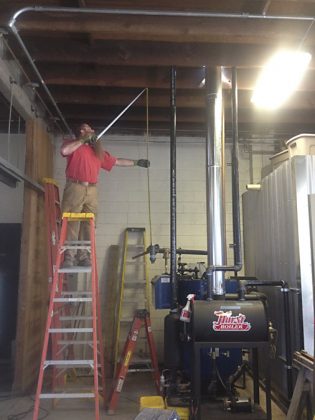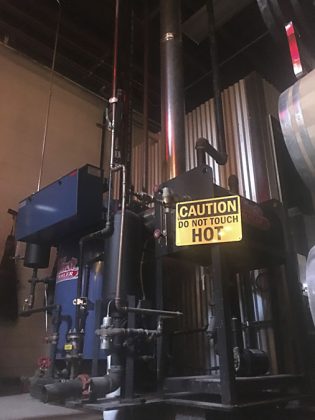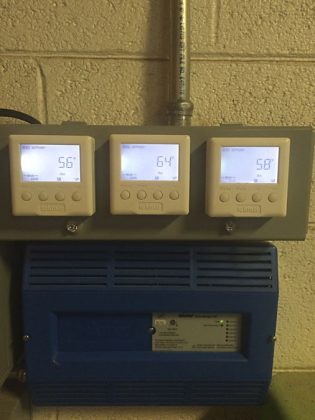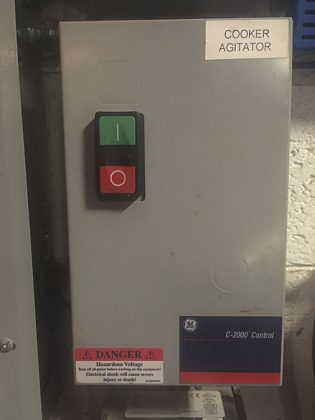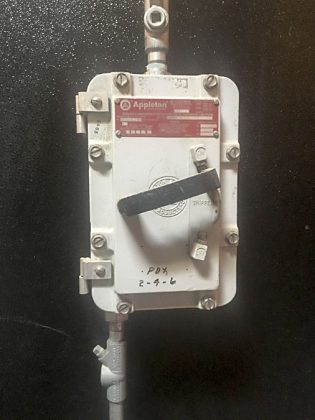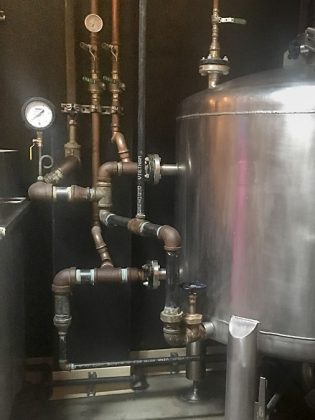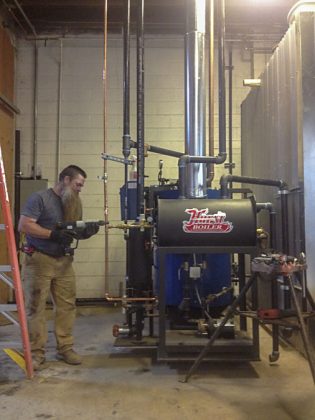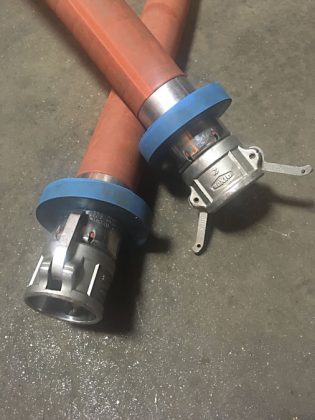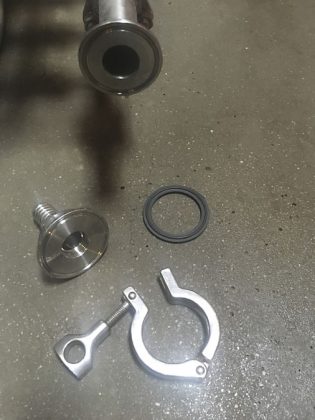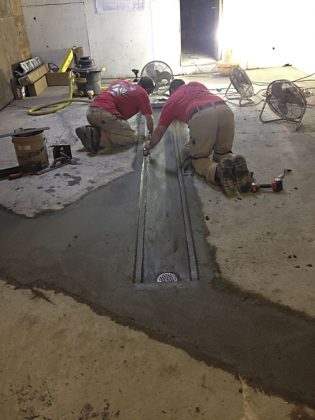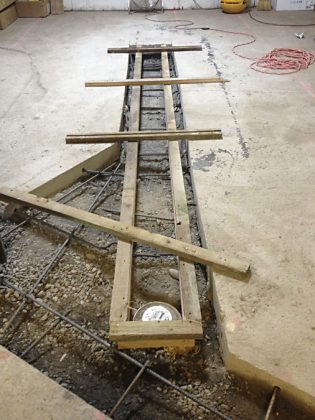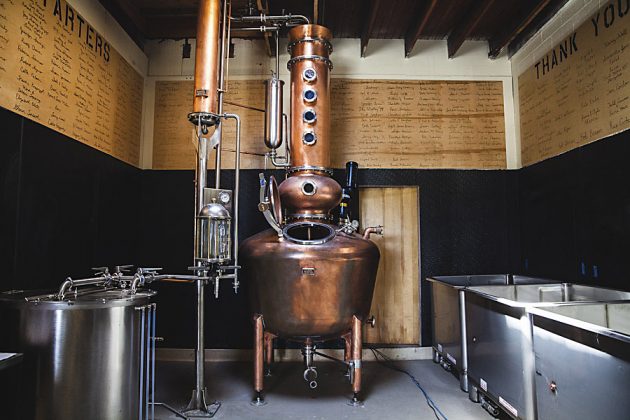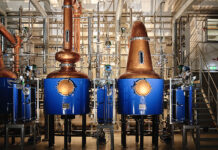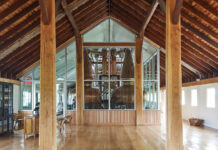The road to success is always under construction.
—Arnold Palmer
The advancement of any craft requires constant tweaking and fine-tuning. With distilling we find this to be literally true as well. A production facility must have a well-built foundation, properly plumbed equipment, safely installed electronics and well-drained floors. Figuring out where to start can get pretty overwhelming. In this article, we’d like to share our experience as licensed contractors who built our own distillery.
BUDGET
Start with a preliminary budget, both to prepare for how much it will cost and to rein in the possibilities.
How much do you anticipate needing for construction labor and materials? Just ballpark it for now until you have approved plans drawn up and can obtain a detailed estimate.
You will need funds for your building permit. Our permit fees were $3,422.65.
What amount of money do you need up front for equipment? Basic items may include a mill, cooker/mash tun, fermenters, still, receiving tank, mash pump, transfer hoses, bottle filler, labeler and corker.
What do you need for start-up costs — ingredients, barrels, bottles, labels, corks, etc.?
How much will you need for payroll, distillery employees and bookkeeping/accounting costs?
TIPS
• Keep in mind ongoing costs such as utilities. Water, gas and electricity bills can quickly add up.
• Many equipment manufacturers require a deposit up front and a series of payments before shipping. It’s helpful to make an amortization schedule to plan ahead for what funds you will need when.
LOCATION
Once you know how much you have to work with, you will need to decide where your distillery will be located. Start by considering what size space you need to operate. Then decide if you are looking at a new building or remodeling an existing building.
If you are renting rather than buying, consider what tenant improvements will need to be made and if the landlord will split/cover any of the costs. For instance, many facilities will be required to have fire suppression. Since this is a permanent feature, you might want to ask the landlord to cover this cost.
TIPS
• Consider neighboring businesses and if they will be ben
eficial or a possible detriment to your business. For example, there is a thriving brewery just down the road from us and many of our visitors are on their way to or from there.
• Is your planned location in an area approved by the TTB and local and state zoning regulations to house a distillery?
• Do you have room to expand in the future?
DESIGN
You will need a set of plans to submit to your local building department, fire department and possibly health department. You can hire a draftsperson, licensed architect, design/build contracting firm or engineering firm. Each of these options will have knowledge of your local building codes and regulations and what details need to be on the blueprints.
TIPS
• Be aware that your local building department could have different requirements than the state and federal government.
• Look at the TTB’s requirements for plans and be sure to use their terms on your blueprints (From point of beginning go East 43’,
thence South 17’, thence…).
• Providing specification sheets for your equipment will help determine what type of fuel, electricity and disposal systems you may need.
• Use upside down spray paint to lay out the location of all major equipment on-site and create the ideal flow for production.


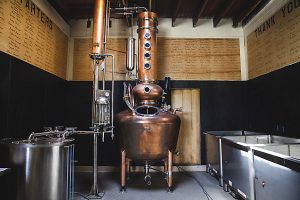
CONSTRUCTION
Once your plans are approved and you receive your building permit, construction may begin.
There are pros and cons to hiring a general contractor (G.C.) versus doing the work yourself (DIY).
Some benefits to hiring a G.C. include:
• Experience with the local building, fire and health departments
• Already own tools that are necessary to complete the job
• Experience and references
• Established relationships with subcontractors
• Ability to create a construction schedule
• Construction is their day job, so s/he can be there full-time from start to finish
Benefits of DIY include:
• You can work at your own pace
• You can set your own schedule
• Potential cost savings in “sweat equity”
TIPS
• If you intend to DIY, here are some tools you may want to invest in:
• A selection of ladders from 3’ to 12’
• An extending forklift and pallet jack
• Pipe tripod and threading/cutting tools/dies
• Electrical tools and testers
• Nylon straps and shackles to assist in unloading equipment and moving barrels, etc.

Flooring
There are many benefits to concrete floors. You can repair an existing slab and/or pour a new cement topping. We installed a product called Ardex over our existing slab.
TIPS
• Speedcove is a great choice for wall-to-floor transitions. Our local health department loves it!
• A trench drain installed into a concrete slab assists in cleaning.
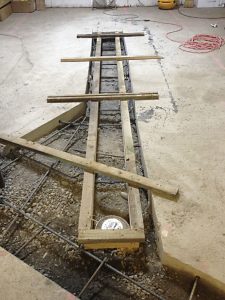
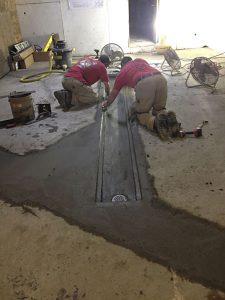
Walls
The health department/FDA requires easily cleanable surfaces and easily washable walls.
TIPS
• Fiberglass Reinforced Panel (FRP) is ideal for durability and ease of cleaning.
• There are many colors and styles besides white!
• Sheets come in 8’ lengths, so hanging vertically gets a tall wall with vertical seams versus a short wall with horizontal seams.

Electrical
Explosion-proof switches may not be required in your area, but they are the safest choice near high-ABV areas with potential sources of ignition.
We recommend that you thermally protect your motors and/or agitators. You may also want to consider automating your fermenters for heating and cooling.
TIPS
• Consider installing a water gauge on your cooker to measure exact water amounts and keep recipes consistent.
• Check eBay/Craigslist for great deals; we found explosion-proof switches for 20% of the retail price and a Ridgid 1822 pipe threader/cutter for $1,000.
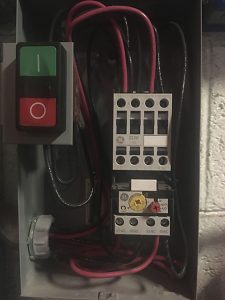

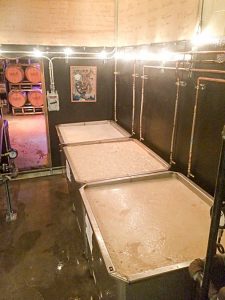
Plumbing
We recommend using schedule 40 for steam boiler piping. We used “L” copper for all water lines and ProPress for all of our copper fittings. Note: You may have seen the ProPress crimping method used by the still manufacturer Vendome.
You will want to understand American National Standards Institute (ANSI) connections.
Your boiler and pressure vessels should be American Society of Mechanical Engineers (ASME) stamped.
Run your cooling water lines in parallel to the dephlegmator and condenser. This will allow you to have colder water to the defleg instead of pre-warmed water from the condenser.
TIPS
• Ask your local distributor for discount or restocked items. We scored six stainless ANSI flanged ¾” ball valves at a great price.
• A sink with hot water is mandated by the FDA and also extremely useful.
• We installed a hose bib and a high-temp hose, which is one of the most prized features in our distillery.
• Plumb your waste lines with cast iron instead of ABS or PVC.



Roof Framing and Venting
Proper venting is crucial for indoor air quality and proper boiler operation. You may want to consider hiring the original roofing company when making roof penetrations. They will have a copy of the warranty and be sure to not do anything to void it.
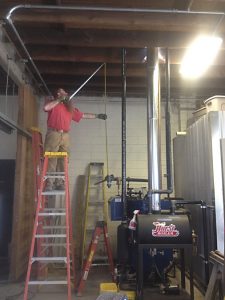
Boiler Installation
Your local building department may require you to hire a licensed steam boiler technician or pipe fitter for steam boiler installation.
Stills, of course, can be heated electrically or by direct fire. We found that an electrically-heated still was more expensive to run versus a natural gas steam boiler, so we chose gas-powered.
Consider schedule 80 pipes for condensate return lines, and be sure to pre-treat your steam boiler’s water supply.
TIPS
• It is a wise idea to inquire if the person installing the boiler is available for servicing as well.
• If you hire a G.C., ask if they have a certain boiler they have experience with. That will ensure they have the knowledge to make any necessary repairs.
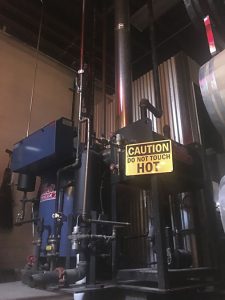
Ongoing Maintenance/Plant Ops
Have a schedule of daily/weekly/monthly/annual tasks. Delegate tasks among your staff and determine whom to hire outside of your company as necessary.
Consider a step-by-step procedural document for the various operations you or employees might perform.
TIPS
• A simple three-ring binder can keep tasks clearly organized.
• If you use a software program such as Distill x 5 or Whiskey Systems, you can add tasks to your schedule.
Safety
• Safety features at minimum should include:
• Eye wash station
• First aid and burn kit
• A copy of OSHA handbook available for quick reference
• Binder of weekly safety meetings
• Lockout/tagout and confined space entry procedures
• Hazard communications: Have Material Safety Data Sheets (MSDS) for all solutions and substances
• Spill and containment procedures

Obviously, this doesn’t cover everything, but we hope it’s useful to help you think about things you may not have known to ask. Good luck on your journey in building your distillery!

